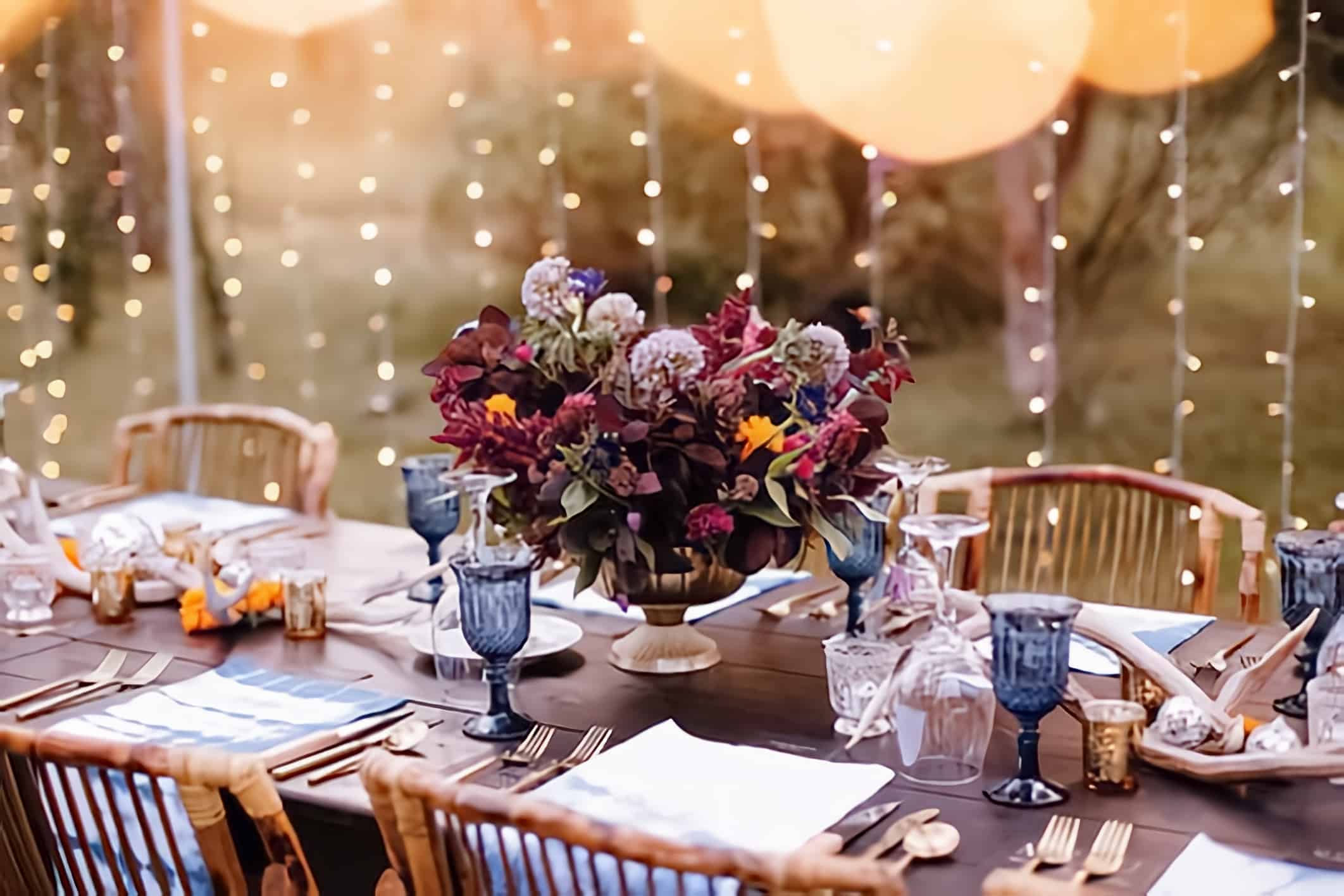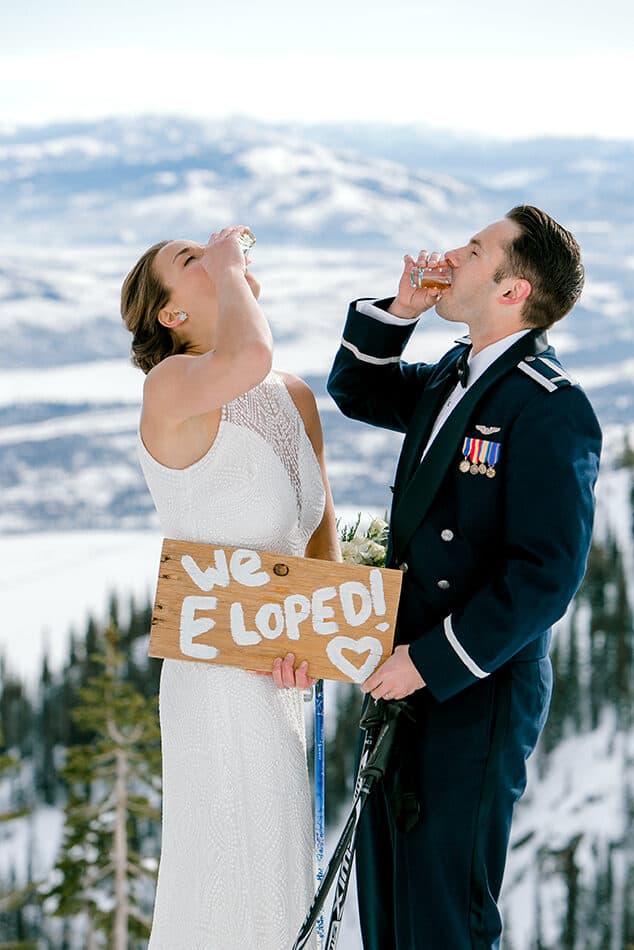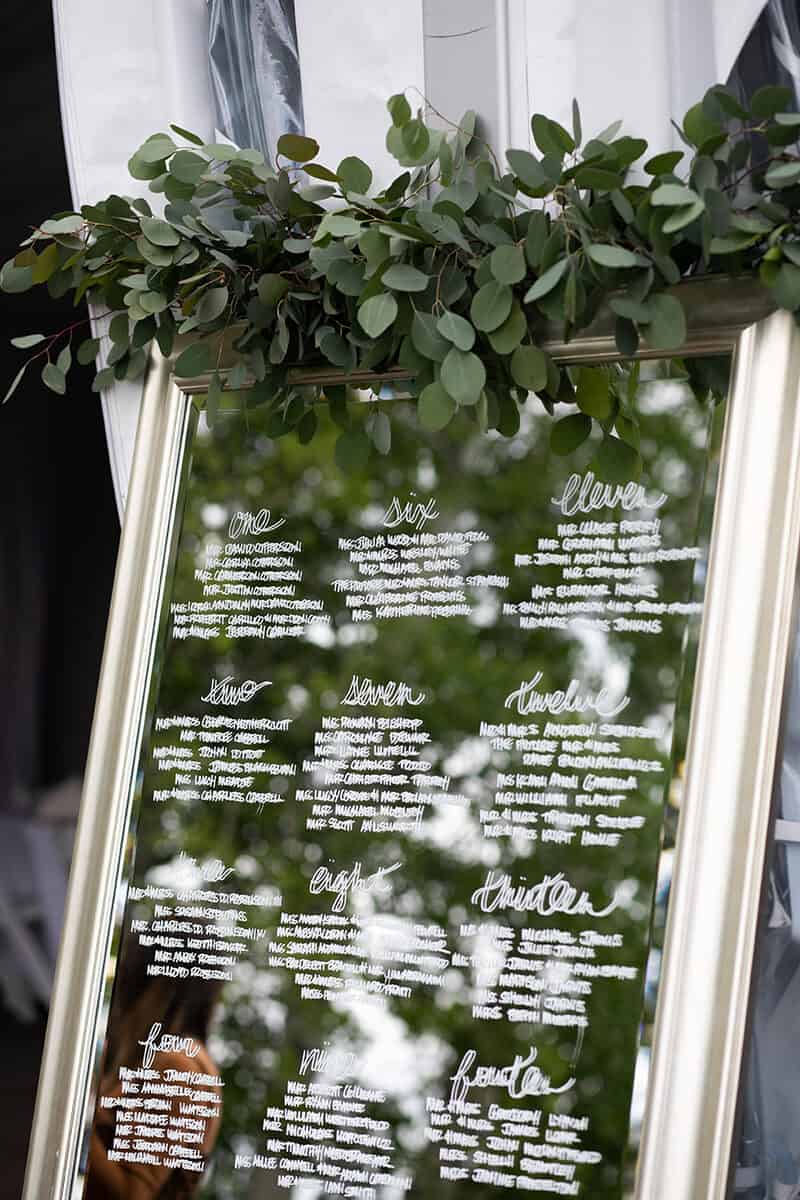HOSTING A ZERO-WASTE BASH
HOSTING A ZERO-WASTE BASH

When string lights are replaced with night sky, natural beauty takes over for cut floral and lace cloths, and solitude awaits future sight-seers, adventure-seekers, and soon-to-be-spouses, how will you return the land you borrow for your wedding day?
In 2017, Ashley Watson Wold stepped into Jackson’s wedding scene with similar questions in mind.
After joining the wedding industry and noticing its incredible waste, she opened a small but mighty coordination service. Wild Rose’s “Earth-friendly events” presented a new dimension that Jackson’s wedding and event industry had not yet seen, one that was born not only from Wold’s love of celebrations, but also from a passion for protecting her home. Today, she proves that we can have it all: all the perfect details, that is, with none of the harmful impact.
It’s a mission that the Teton region can get behind, as this little community has made major changes proving that “Jackson is too good to waste.” In 2014, Teton County approved the Zero Waste Resolution, and by 2030, via its Road to Zero Waste plan, it hopes to divert 60 percent of the community’s leftovers from landfills.
Weddings and events play a huge role in this plan.
The Huffington Post estimates that in six hours, a wedding of 100 guests generates 400 to 600 pounds of waste, and roadtozerowastejh.org talks about mitigating the effects of “a considerable amount of waste [generated] in a very short time period.” So, we outlined an easy-to-implement green wedding guide—with the help of Wild Rose’s innovative ideas, of course—using Jackson’s Road to Zero Waste initiatives.
How to think “green” during planning:
1. Ask yourself: “What’s worth fighting for?” The road to a zero-waste wedding will include detours that take time, potholes that will consume emotional effort, and toll zones that will cost money. But if we plan on passing down our wedding dress and a healthy home to future generations, we have to start thinking more sustainably. Find your reason and plan with intention.
2. Ask others.Add three planning questions to your interviews with vendors: What are you doing to reduce your waste? What else could you be doing to reduce waste? What can I do to help? If you ask early and provide tools and resources, each vendor can plan and simplify their own process. To soften the blow of this request, Road to Zero Waste JH includes vendor resources in its “Green Event Guide” (tetonwyo.org/DocumentCenter/View/946/Zero-Waste-Green-Event-Resource-Guide-PDF).
How to be green while you party:
1. Keep love local. One item purchased locally could save one box from shipping, ten strips of bubble wrap from wrapping, 1/2 pound of plastic from packaging, and hundreds of miles worth of gas emissions from transporting. Plus, hiring local vendors quite literally supports your neighbor, and the money they receive often goes back into what makes Jackson, Jackson. “[Local photographer] Erin Wheat donates a portion of her proceeds each year to national parks,” Wold points out. To complete the love circle, “Donate your leftover food to a local food bank and bring your flowers to the nearby senior center,” she suggests.
2. Think digital.It’s 2020, and paper trails are out of style. Gone are the days of a paper invitation, paper program, paper menu, and a paper thank-you card for every guest. Think twice about what needs to go to print and eliminate the rest. “Use reusable signage such as chalkboards,” says Wold. And electronic thank-you’s now reach even the oldest person on your guest list.
How to inspire green post-celebrations:
1. Think outside the (wrapped) box.Choose experiences over material goods. A honeymoon in Greece sounds better than another toaster, doesn’t it? It also comes without plastic wrapping, cardboard boxes, and tissue paper. Or go even further by asking your guests to contribute to something more meaningful. At Wold’s wedding, she and her husband planted a tree for every guest who attended.
2. Leave one trace. Don’t be afraid to make your mark, just not on the land. Let your legacy inspire intentional thinking in your guests and vendors. “They will notice your subtle changes toward the greener option,” notes Wold, “and it can lead them toward making small changes in their own daily lives.”
3. Return your borrowed land to the next generation. Return your aisle as though your daughter will be the next to walk down its grassy surface. Protect your backdrop as if your son will take his first dance in front of the same skyline. Leave only love for your children to find on your precious space.


